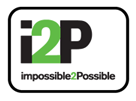Classroom Activities For Teachers by Teachers
Topic Focus: Financial Responsibility
Creating sensible habits can help you succeed or keep you on a treadmill, with success always at a distance. Habits can be somewhat complicated at times because they are automatic. They kick in before you can stop to think about them and can lead to unwise decisions if you are not paying attention. Shedding light on what influences our decisions and how we make them is important especially for today’s youth. Whether you are an i2P Youth Ambassadors running across the Atacama Desert, a student in a classroom or a young adult planning for your financial future, making wise choices begins with identifying our values, setting our priorities and understanding how to create sensible habits that result in better use of our time, money and resources.
These basic life lessons are essential to becoming financially responsible. Nowadays it seems that youth learn these lessons through trial and error, which often leads to misconceptions and crippling debt. Discussing and becoming aware of financial skills at home, school and through community will help lead our youth onto a path of lifetime financial security.
Generations Interview: What methods did your parents/grandparents use to save over time? What were their short/medium/long term goals?
To Buy or Not to Buy?
Objective:
- To understand possible consequences of sensible/unwise financial habits and how they impact us.
- To understand that creating sensible habits and setting priorities help us to become more resilient in our everyday lives
Activity 1
Place Mat Opening: Divide students into groups of 3. At each table have large paper and markers. Ask students to divide the paper into 3 sections with a circle in the middle. In the circle write the following question: “If all your bills were paid and you found $100, what would you spend it on?” Students have 1 minute to write down their answers independently. After a minute, have students share their responses with their group.
Discuss:
- How do you identify what is important to you?
- What does this say about your what you value?
- How do our values affect what we buy?
- How do you make decisions about what you spend money on?
Activity 2
Was It Worth It: Have each student divide a paper into 4 columns with the headings below. Ask them to individually write down items and approximate cost of what they bought at some point in time in each category.
- It was overpriced but totally worth it!
- It was overpriced and I bought it but now I regret it?
- It was a great deal and totally worth it!
- It was a great deal but I really did not need it!
Estimate how much money was wasted for each column and calculate the total.
Discuss:
(financial impact)
- What are the possible consequences of sensible/unwise habits. What are the positive consequences? Example: Saving a portion of your money to pay for things you want/need.
- What are the negative consequences? Example: Going out for lunch every school day but not having money to buy gas.
- What are some factors that influence our everyday decisions? How are these factors different/similar from those that influence our buying decisions?
- Can you list other sensible habits that would be good for people to use?
- What decisions and research went into the purchase?
- Are you still happy with the purchase?
- What could happen if you didn’t have a spending strategy?
- Do students frequently compare prices?
- Do students think about how often they will use an item before they purchase it? Why do they do this? Why do they not?
- What do you think is meant by financial responsibility?
(Impact in other areas)
- Why do some people have difficulty creating sensible habits? What can change that?
- How do our habits impact our lives? Our community?
- How does understanding our values and creating sensible habits help us become more resilient?
- Can you provide an example of a community that has had to become resilient and that has therefore created sensible habits that mirror their values?
Extension:
- In 30 words or less create a personal money motto or rule to live by that inspires you to stick to sensible spending habits that match your values.
- Document expenditures for the month and gather all your receipts. Compare your monthly spending with your classmates.
Sources: http://butera-bdk1.wikispaces.com/file/view/_LsnPln_1-1+Money+Habits_pub2013-02.pdf
Decisions, Decisions, Decisions
Objectives:
- To look at the possible reasons we make the spending decisions that we do
- To understand the decision making process as a way to make better spending decisions
- To identify factors that might influence our decisions
Activity 1
What Made You Decide? Explain to students each of the decision making strategies listed below. In groups of three have students make 3 columns on a large piece of paper with the following headings and fill the columns out for each strategy:
- Recent decisions that have been made using this strategy
- Factors that influenced the decisions to use that strategy.
- Example in own lives
Decision Making Strategies:
Spontaneity: Choosing the first option that comes to mind; giving little or no consideration to the consequences of the choice.
Compliance: Going along with family, school, work, or peer expectations.
Procrastination: Postponing thought and action until options are limited.
Agonizing: Accumulating so much information that analyzing the options becomes overwhelming.
Intention: Choosing an option that will be both intellectually and emotionally satisfying.
Desire: Choosing the option that might achieve the best result, regardless of the risk involved.
Avoidance: Choosing the option that is most likely to avoid the worst possible result.
Security: Choosing the option that will bring some success, offend the fewest people, and pose the least risk.
Synthesis: Choosing the option that has a good chance to succeed and which you like the best.
Activity 2
Making The Final Decision: In groups of 3, have students identify decisions they are trying to make and try and select one that is common to the group (e.g. taking a vacation, moving away from home, buying a car, changing jobs, getting a part time job, saving money, etc.)
Give each student 2 minutes to write down in point form how they are presently going about making their decisions. Give each group 3 minutes to discuss their thoughts.
Have each group use the following decision-making process to arrive at a possible solution for the above chosen decision.
Decision Making Process:
- Identify a goal or problem
- Obtain information and think about possible courses of action or possible alternatives.
- Consider the consequences of each choice (action) and evaluate the alternatives.
- Select the best course of action.
- Evaluate the results.
Discuss:
(Financial impact)
- How is this process useful or not useful to you?
- How can being aware of the decision making strategies outlined above help you in the future?
- Why and when is the decision making process valuable to use compared to just making decisions with no process?
(Impact in other areas)
- Have you ever experienced this process as part of a group that you might be involved with at school or in your community?
- Do you think sports teams use this process? How?
- Do you think your parents use this process in their workplace? How?
- Can you give examples of the best and worst decisions you or someone you know have made in their lives?
- How can using this process be useful in a community?
Extension:
- Have students create a skit to explain the different decision making strategies.
- Ask students to interview their parents about a time they might have used this process.
- Ask students to view a TV show/movie and have them use examples from the show to fill out each step of the Decision Making Process.
Sources: http://www.practicalmoneyskills.com/foreducators/lesson_plans/lev_3/L3TeachersGuide1.pdf
A Bucket Full of Goals
Objectives:
- To understand the difference between short, medium and long term goals
- To investigate steps one can take to reach their goals
- To examine how one might balance needs and wants in order to achieve goals
Activity 1
The Bucket List: A “bucket list” is a list of goals one wants to accomplish in life, like running across the Atacama Desert as our i2P Youth Ambassadors are doing, writing a novel or traveling to a foreign country. Ask students what would go on their lists, and give them five minutes to reflect and to write a bucket list in their notebooks.
Invite students to share from their lists and record some of the items with a clear financial component on the board (e.g., go to college, visit Paris). Ask students what these goals have in common and discuss how money can help us achieve some goals.
Discuss which of the goals can be reached the fastest and why. Challenge small groups of students to sort the goals into three categories: short-term (requires less than six months to achieve), medium-term (less than a year) and long-term (longer than a year). Have students explain their reasoning. Remind students that good goal setting usually requires the goals to be S.M.A.R.T. ones (specific, measurable, attainable, realistic, time bound).
As a class, discuss some of the factors that go into categorizing short-term, medium-term and long-term financial goals. Explain that goals may be categorized by the life stages when they will likely be accomplished and by the amount of money required (goals that require less money may also take less time to achieve).
Choose one of the short term financial goals shared and answer the following:
- What is the goal?
- When do you want to complete it by?
- How much money must you save in total?
- How much money must you save monthly?
- What steps can you take to reach your monthly goal?
- What wants can you cut out to reach your goal?
Discuss
- What are possible steps students might take in reaching that goal (e.g., saving allowance, gifts, salary and responsible spending).
- How do needs and wants relate to one another: What happens if you spend all of your money on things you want? What if an unexpected “need” prevents you from saving for a “want”? Can students think of strategies for balancing the two (e.g., making a budget with spending categories)?
- How do you think your current goal setting efforts will affect your financial future?
- What could prepare you ahead of time for you to reach your goal?
Extension:
- Ask students to interview a serious athlete and have them relate the athlete’s goal setting process to that of their own.
- Have the class choose a class fitness goal and go through the goal setting process to achieve it. If successful, have a party!
- Have students apply the S.M.A.R.T short/medium/long term goal setting process to a non-financial goal (sports, school, hobbies, work, music…)?
Sources: https://practicalmoneyskills.com/foreducators/lesson_plans/lev9-12/TG_Lesson2.pdf
Explore Additional Financial Literacy Classroom Activities Here









